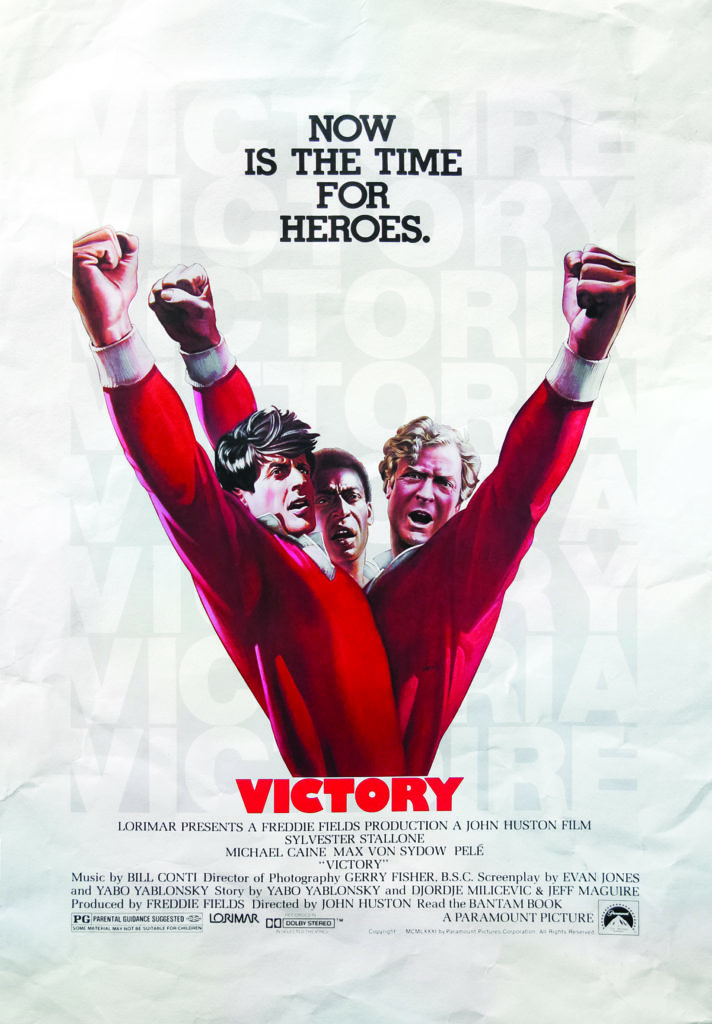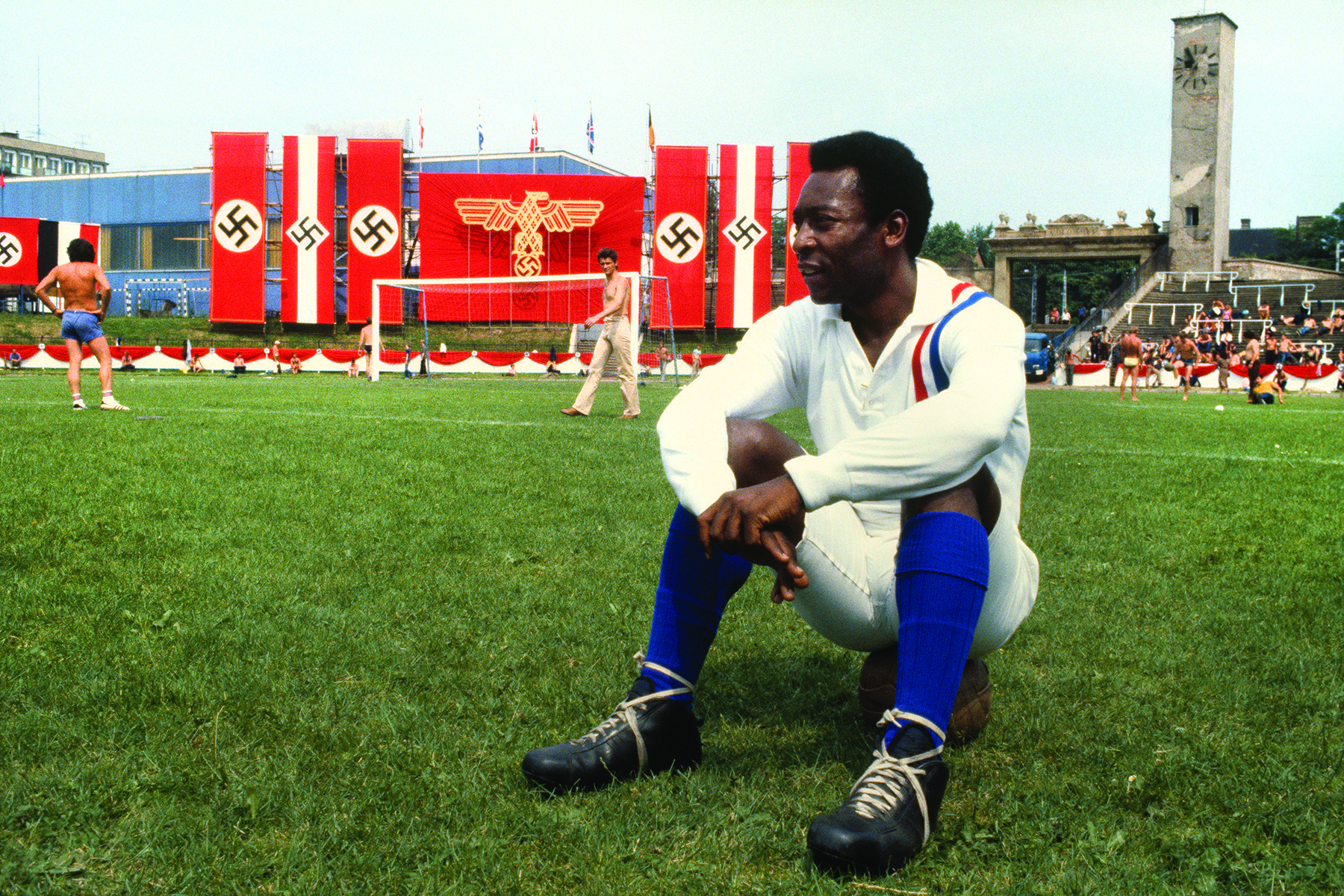Allied POWs use an unlikely weapon to defy the Nazis in John Huston’s Victory.
We think of power as something that originates with the high and mighty, cowing the rest of us into submission. But this view overlooks a central point: a person is only as powerful as those who obey him. Strip away obedience and he falls. This argument was forcefully made by the late Gene Sharp (1928-2018), an American political scientist known as “the Clausewitz of nonviolent warfare.”
Dictatorships, Sharp posits, have inherent weaknesses that can be exploited by nonviolent resistance. It takes time, discipline, and strategic judgment, but the systematic use of certain tactics can topple a seemingly impregnable regime. The secret is to strip away obedience via means the dictator cannot effectively counter by violence.

Directed by John Huston and released in 1981, Escape to Victory brilliantly illustrates Sharp’s point. The film tells the story of Captain John Colby (played by Michael Caine), a British Army officer in a German prisoner-of-war camp who had been a professional soccer player before World War II. One day German major Karl von Steiner (Max von Sydow), himself a prewar soccer star, requests that Colby assemble and coach a team of Allied POWs to play against a German team. After bargaining for conditions to make the deal worthwhile—proper equipment, better food for team members, and above all, the inclusion of Polish and Czech players, who are being treated not as POWs but as forced laborers—Colby agrees to the match.
Initially planned on a modest scale, Steiner’s superiors hijack the exhibition game, move it to a stadium in Paris, and buy off its referee from a neutral country (and therefore ostensibly neutral in his officiating) to ensure a German victory in front of thousands of Parisian spectators. And sure enough, the referee issues decisions during the game’s first half that result in the Germans rapidly scoring four goals. But even after the Germans injure one of the Allied team’s top players (Corporal Luis Fernandez, portrayed by Brazilian soccer legend Pelé), the POWs unexpectedly score a goal just before the half ends.
At halftime, the Allied players enter the visitors’ locker room and discover something that only American goalie Robert Hatch (Sylvester Stallone) has known up until now: the French Resistance has used the sewer system running beneath the stadium to create a tunnel by which the whole team can escape. The men begin climbing down into the tunnel.
“I don’t want to go,” one player declares.
“Just shut up and get in there,” Hatch snaps in reply.
“We can beat them,” insists the player, and quickly others chime in: “Let’s go back. We can win this.” “It’s not as though we’re being slaughtered, Skipper.”
Suddenly intrigued, Colby says, “What do you mean, we can win?” Hatch impatiently urges Colby to get going, but Colby embraces the idea of playing the game’s second half. There is just one problem: Hatch is the only goalie. If he leaves, the entire team must follow. “Please, Hatch,” implores Fernandez. “That game means a lot to us. You know that. You must go back. Hatch, if we run now, we lose more than a game.”
The film cuts to Nazi flags waving above the stadium, and the team returns to the field. What follows is a stunning duel between the two sides (in part because many of the film’s characters are played by professional soccer players). The Allied team racks up two goals, making the score 4 to 3, but then a third goal that would tie the game is rejected in a blatantly corrupt ruling by the referee.
The sidelined Fernandez tells Colby that he wants to return to the game. Colby permits him, and soon Fernandez scores the elusive goal with a dazzling overhead bicycle kick that spins him full circle. This feat decisively ties the match.
“Victoire! Victoire!” the crowd begins chanting. The Nazi officers presiding over the game realize their propaganda stunt is backfiring. Then Hatch saves a last-second penalty kick, ending the game in a tie that is really a win, as everyone knows the rejected goal was valid. The crowd begins singing France’s national anthem, “La Marseillaise.” Spectators spill onto the field by the hundreds, surrounding the Allied team, and the players are draped with coats and hats, allowing them to blend into the crowd and exit the stadium.
Colby and his men escape their captors, but the film’s real power lies not in their freedom, but the way in which it shows how a single soccer team can generate a mass protest the Nazis cannot counter. What are they going to do: murder the team? Murder everyone in the stadium for cheering the team or singing a song? Colby’s team has struck a mighty blow against the Germans— and there’s nothing they can do about it. ✯
This article was published in the August 2020 issue of World War II.

